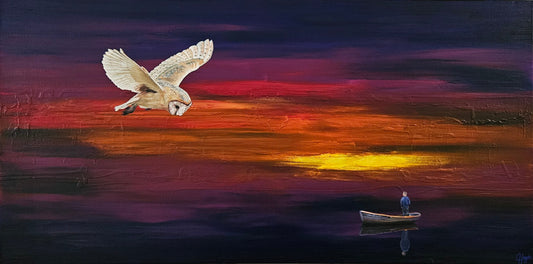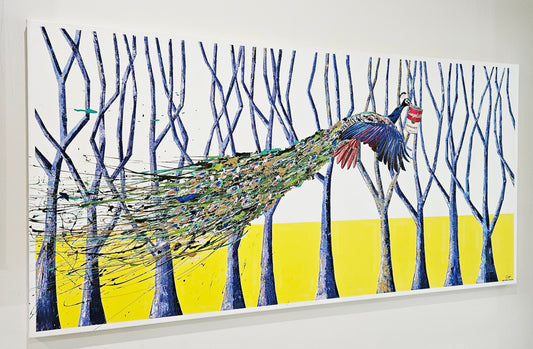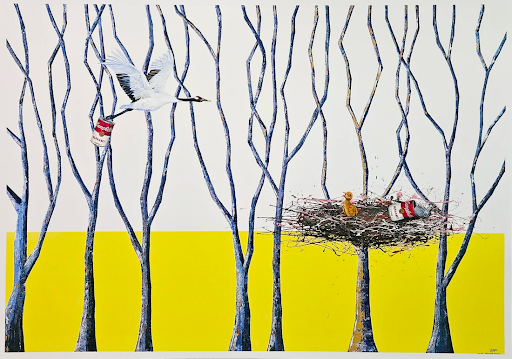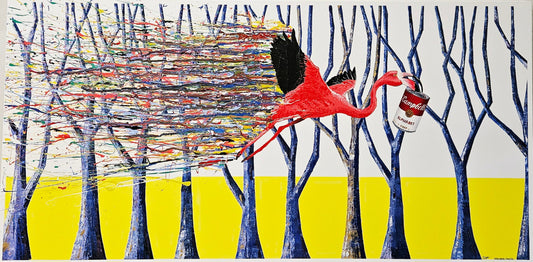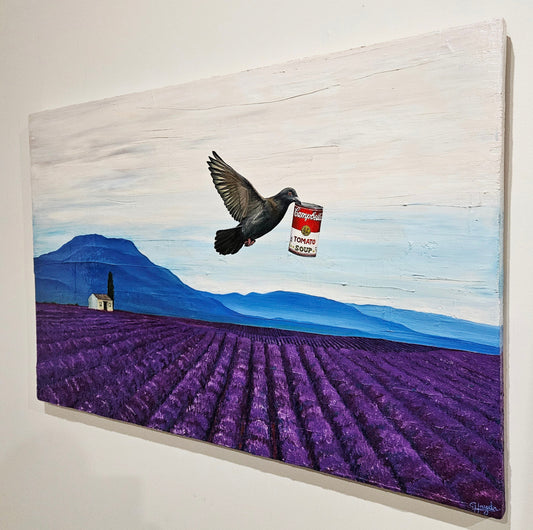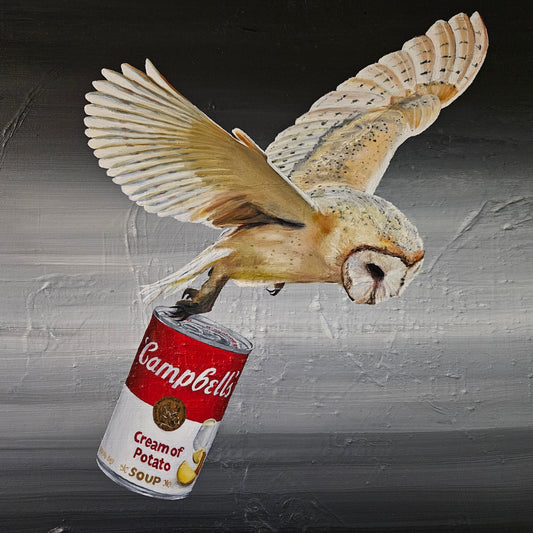"Aboriginal Influences in Modern Australian Art"
Celebrating Indigenous Pioneers:
While modern Australian artists like Haydn Englander-Porter bring their unique perspectives to the global art scene, it's essential to pay homage to the Indigenous artists who have laid the foundation for art's narrative in Australia.
Albert Namatjira:

One of the most celebrated Aboriginal artists, Namatjira's watercolours of the Central Australian desert broke conventions. With his Western-style landscapes imbued with Aboriginal sensibilities, he introduced an entirely new way of viewing the Australian outback. His depictions of the MacDonnell Ranges, in particular, remain iconic and inspire countless artists and admirers even today.
Emily Kame Kngwarreye:

Emerging as an artist at an advanced age, Emily's prolific work in the realm of abstract art was deeply rooted in her cultural heritage. Her paintings, often viewed as representations of the 'Dreaming', were powerful expressions of her community's stories and her personal experiences in the Utopia region of Central Australia.
Rover Thomas:

Responsible for initiating the East Kimberley art movement, Thomas' earthy, ochre paintings depicted both the spiritual 'Dreaming' stories and episodes from his own life. His work, 'Cyclone Tracy', remains one of his most well-known pieces, blending his personal experiences with broader Indigenous themes.
Fiona Omeenyo:

Representing a younger generation of Indigenous artists, Omeenyo's works delve deep into the connection between people, their ancestral spirits, and the land. With a blend of human figures and shadow spirits, her art captures the interplay between the physical and spiritual realms.
Paddy Bedford:

Known for his minimalist style, Bedford's works were a contemporary take on traditional Ngarrankarni (Dreaming) stories and the East Kimberley landscape. The ochre and natural pigments used in his paintings not only pay homage to his Gija heritage but also highlight his innovative approach.
The Confluence of Traditions and Modernity
These Indigenous artists, with their pioneering spirit, carved out a space for Aboriginal stories in the global art landscape. Their works have been showcased in prominent galleries, not just in Australia but worldwide, bridging the gap between ancient traditions and contemporary art forms.
Furthermore, their legacy and influence are palpable in modern exhibitions. While Porter Painting’s art is a narrative in its own right, the broader Australian art scenario, of which he is a part, has been undeniably enriched by these Indigenous contributions.
By understanding and celebrating these Aboriginal artists and their monumental contributions, we can truly appreciate the tapestry of Australian art in its entirety — a rich blend of ancient traditions, personal narratives, and contemporary techniques. As the art scene in Australia continues to evolve.
Blending the Old with the New
The narratives shared by Aboriginal artists go beyond mere depictions; they are a testament to the richness of their culture, traditions, and their unyielding bond to the Australian land. Their art is an embodiment of thousands of years of history, stories passed down generations, and a profound understanding of nature and spirituality.
Gordon Bennett:

Hailing from Queensland, Bennett was deeply influenced by the post-colonial thought which reflected in his art. Addressing issues of cultural and personal identity, Bennett's work often showcased the inherent conflicts and intersections of his Aboriginal and Anglo-Celtic heritage. His art served as a platform to challenge and dissect Western art history and its relationship with the Indigenous narrative.
John Mawurndjul:

Recognised for his rarrk paintings, intricate fine lines over cross-hatching, Mawurndjul's art is a vivid portrayal of the Kuninjku culture. His depiction of spirits, animals, and the lush landscapes of Arnhem Land has garnered attention internationally. Mawurndjul's works are not just paintings; they are an invitation into the world of Kuninjku, offering insights into their ceremonies, traditions, and their deep reverence for the land.
Tracey Moffatt:

Moffatt's contemporary artworks transcend the traditional; they're a blend of film, photography, and video. Addressing poignant themes of racial and sexual identity, childhood traumas, and the dichotomies of urban and remote life, Moffatt's works are provocative, challenging societal norms and perceptions.
The Global Resonance of Indigenous Art
Aboriginal art, with its profound depth, resonates globally, touching hearts and evoking curiosity. Major art institutions worldwide, from the Tate Modern in London to the Museum of Modern Art in New York, have recognised and celebrated the works of these Indigenous talents.
For collectors and art enthusiasts, including the likes of Haydn Englander-Porter, the distinct style and profound narratives of Indigenous art offer a unique and mesmerising experience. It's not just about adding an artwork to a collection; it's about becoming a part of a story, a tradition, and a history that spans thousands of years.
Moreover, the global appreciation and demand for Aboriginal art have played a pivotal role in elevating the socio-economic status of many Indigenous communities. Art has become not just a medium of expression but also empowerment.
Influence on Contemporary Australian Artists
Today's Australian art scene, brimming with diverse talents and voices, owes a significant debt to its Indigenous artists. While every artist, including Porter Painting’s, brings forth their unique voice and perspective, the overarching influence of Aboriginal narratives, techniques, and philosophies is undeniable.
This amalgamation of traditional Aboriginal themes with modern techniques and perspectives makes Australian art truly unique. It serves as a reminder that while art evolves, the roots from which it draws its nourishment remain deep-seated in history and tradition.
In conclusion, understanding the profound impact and contributions of Aboriginal artists is crucial to appreciating the depth and diversity of Australian art. Their stories, beliefs, and unparalleled connection to the land offer a rich tapestry from which contemporary artists, and indeed, all of Australia, continue to draw inspiration.


